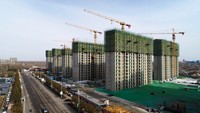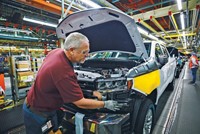Advertisement
Grab your lab coat. Let's get started
Welcome!
Welcome!
Create an account below to get 6 C&EN articles per month, receive newsletters and more - all free.
It seems this is your first time logging in online. Please enter the following information to continue.
As an ACS member you automatically get access to this site. All we need is few more details to create your reading experience.
Not you? Sign in with a different account.
Not you? Sign in with a different account.
ERROR 1
ERROR 1
ERROR 2
ERROR 2
ERROR 2
ERROR 2
ERROR 2
Password and Confirm password must match.
If you have an ACS member number, please enter it here so we can link this account to your membership. (optional)
ERROR 2
ACS values your privacy. By submitting your information, you are gaining access to C&EN and subscribing to our weekly newsletter. We use the information you provide to make your reading experience better, and we will never sell your data to third party members.
Business
Latin America: Policymakers, Industry Seek To Boost Competition
by Alexander H. Tullo
January 14, 2013
| A version of this story appeared in
Volume 91, Issue 2

Economic growth in Latin America slowed in 2012 as Asian demand for commodities abated. More braking came as government measures—such as the Brazilian central bank’s earlier effort to tighten the money supply to prevent economic overheating—took hold.
Brazil’s economy posted only 1.5% growth in 2012, the International Monetary Fund (IMF) reports, a decline from 2011’s already modest 2.7% expansion. The country’s chemical industry saw shipments decline by 2.7% in 2012 to $153 billion, according to the Brazilian industry association Abiquim.
Argentina, which registered a China-like 8.9% surge in economic activity in 2011, had only moderate 2.6% growth in 2012. Mexico, which is tethered to the relatively strong U.S. economy, posted 3.8% growth in 2012, consistent with its 2011 performance.
IMF expects economic performance to improve in Latin America as governments ease monetary policy and engage in fiscal stimulus. Economists warn, however, about potential downsides that are beyond the control of Latin American policymakers. “The main near-term risks are related to an escalation of the euro area crisis and the U.S. fiscal cliff,” IMF reported in its most recent economic outlook.
The biggest problem facing chemical makers in Brazil, Latin America’s largest economy, is a lack of international competitiveness. Rina Quijada, CEO of the Houston-based consulting group IntelliChem, says the country suffers from high manufacturing costs. For example, natural gas costs three times more in Brazil than it does in the U.S. The strong Brazilian currency and high tax levels don’t help matters.
The lack of competitiveness is evident in Brazil’s long-standing chemical trade deficit, which grew last year to $28.1 billion, fueled by a 1.9% increase in imports and a 4.4% export decline, according to Abiquim.
“Net trade of the country is going in the wrong direction,” Quijada says.But she praises the government for identifying major problems and trying to come up with solutions, such as encouraging more production of oil and natural gas.
The Brazilian government also has dusted off a time-honored method of aiding local manufacturers: raising tariffs on imports. In the fall, the government substantially increased duties on 100 imported products. The list included chemicals such as ethylene glycol, polyethylene, and polycarbonate.
MORE ON THIS STORY
- - World Chemical Outlook
- - Pharmaceuticals: Companies Will Focus On External Partnerships To Improve Productivity
- - U.S.: Domestic Manufacturing Slowdown Will Be Offset By Shale Gas Upside
- - Construction: The Action, Once Again, Is In Developing Countries
- - Europe: Economy And Chemical Industry Are Expected To Stagnate
- - Fine Chemicals: Optimism Prevails Over Uncertainty
- - Asia: Slowdown In China, Although Mild, Is Cause For Concern
- - Petrochemicals: The U.S. Will See A Boom As Europe And Asia Struggle
- - Cleantech: New Funding Will Be Scarce, But Scale-Up Plans Continue
- - Specialties: Growth To Be Fueled By Autos, Electronics
- - Canada: After A So-So 2012, Chemical Firms Prepare For A Brighter Future
- - Instrumentation: Firms Plan For The Long Term Amid Short-Term Uncertainties
- - Middle East: After Years Of Growth, A Profits Squeeze Lies Ahead
- - Advanced Materials: Carbon Fiber, 3-D Printing, Graphene To Make Inroads
- - Latin America: Policymakers, Industry Seek To Boost Competition




Join the conversation
Contact the reporter
Submit a Letter to the Editor for publication
Engage with us on Twitter